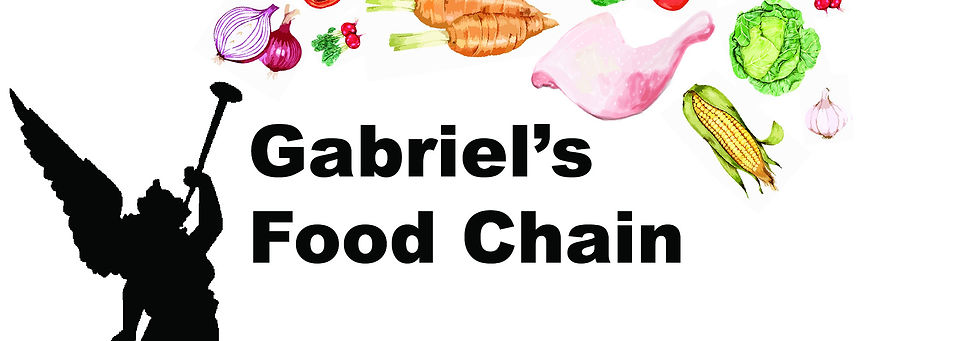The Curious Pig
- Gabriel's Food Chain

- Sep 23, 2019
- 3 min read
Pigs are curious. They are something to be curious about and they are curious about almost anything worth pondering.
How an animal meets its end is as important as how it lives its life. Crowded into too small spaces after having been force fed to be made ready for market, pigs raised and killed in factory farms are in fear when they die. Fear triggers all sorts of nasty hormones that get passed onto you when you've eaten a terrified beast. Don't you owe it to all the curious pigs (and yourself) to eat responsibly? Take for example this curious pig who lives in Ireland.

He was encountered by Renée Guillory while traveling. She's been kind enough to share her picture and write about their encounter for Gabriel's Food Chain. Thank you Renée!
The Incident of the Curious Pig at the Daytime: A Gentle Reminder on the Eloquence of Animals, As Experienced by a Sometimes Meat-Eater
A farm is so many things. A web of stories. Associations. Histories. Economies. And of course, they are ground zero for many of our foods, too.
A rare long vacation in Ireland meant I had time to stop at a number of living dioramas that relate details of life in castle complexes or villages, from medieval to modern times. Some of these included farms and farm animal petting zoos for tourists, where children made sword play with peacock feathers, heather crowns slipping off as they gamboled in the muck.
Sunny. Hot for the season. One pig stood out—and up. He was a curious fellow, not put off by the approaching humans. On a mission. About 100 pounds, he was an adult. Ginger and white coat. Dainty feet. Cloven hooves and intelligent eyes. Walking along the wall on two back legs, balancing with his front legs, looking over the (historically-accurate) low stone wall that was just high enough to prevent his escape, but low enough for him to see across a path, to see The Other Side. Was it wanderlust?
The Irish Times was reporting on animal welfare actions, including blockades of farm trucks—partly driven by Brexit backstop discussions, and partly because the cause was maturing in its own way, radicalizing to take on the strong hold of pastoral industries that are bedrock to the food system and indeed Ireland’s national economy. A rough history: first, there were volcanoes and glaciers, and the long clashing and stitching of two lost continent fragments, then forests and druids, then clearings for farms and monks and kings and queens, and then wars and famine and nation-building, and finally the ebb and flow of Europeanization. To be continued.
The farms have persisted, though not in their diorama form, one supposes, based on the news stories. Some farm industrialization has taken place even here in this emerald isle, but for now, European Union standards have a positive impact—the Lisbon Treaty of 2009 even recognizes animal sentience. As far back as 1998, the European Commission issued Council Directive 98/58/EC, which was based on an earlier European Convention for the Protection of Farm Animals, and “they reflect the so-called ‘Five Freedoms’:
• Freedom from hunger and thirst
• Freedom from discomfort
• Freedom from pain, injury and disease
• Freedom to express normal behaviour
• Freedom from fear and distress” No one will likely come to rescue the pigs here at Muckross House, situated in Killarney National Park. Their lot is pretty sweet, even though it’s a working family farm, and they will feel the blade at some point. But they play and loaf and, by their very existence here at this moment, standing on two legs, all the better to look us in the eyes, they inspire bigger questions, and compassion.




Comments